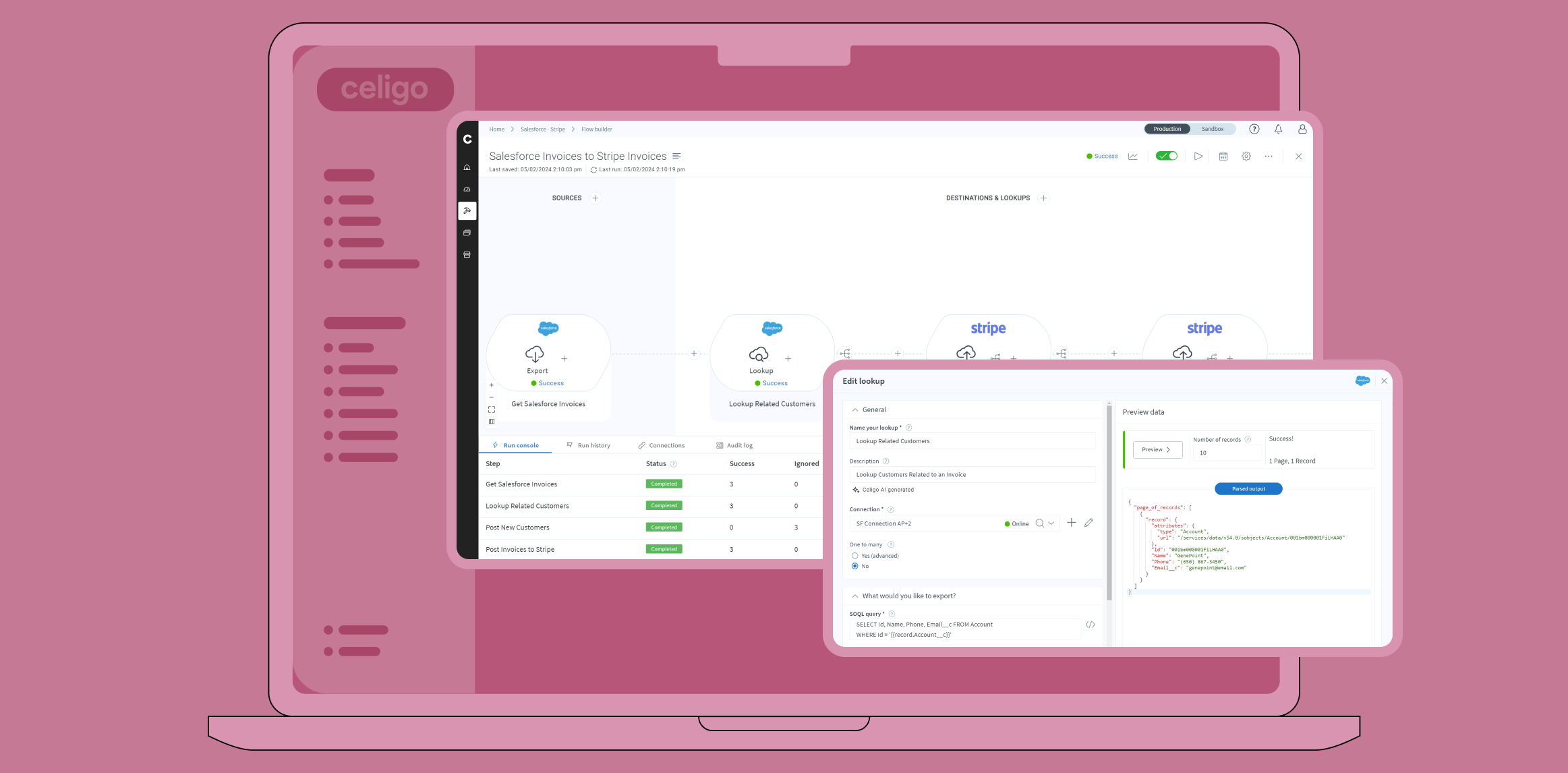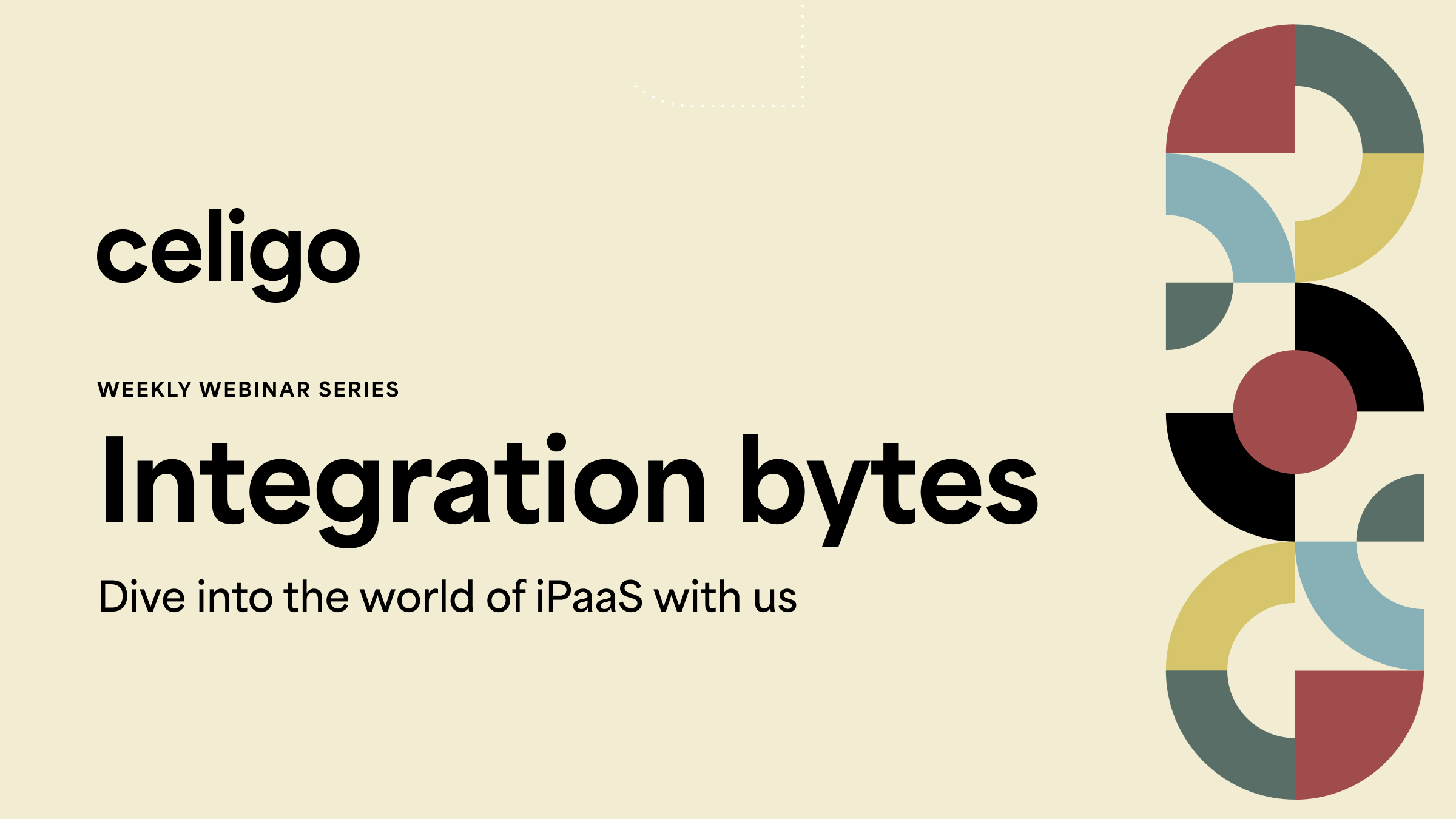Published Jan 30, 2024
What are ERP integrations?

Businesses capture immense amounts of data every day. This data deals with everything the business needs to run whether it’s inventory, accounting, or customer relations. Without this constant stream of information, businesses would be left in the dark about their performance, and how to make decisions to further improve it. Considering the amount and importance of the information a business gathers, the information must be accurate and gathered quickly. To meet their goals, enterprise businesses employ something called an ERP system. The ERP system is connected to every part of a business and is responsible for collecting and categorizing information the business needs. While the business relies on the ERP system to ensure its data is gathered quickly, accurately, and securely, ERP systems often require some back-end integrations to ensure they get the job done.
This is where ERP integrations fit in. ERP integrations connect the ERP system with each part of the business to allow for secure data flow across the enterprise. Without ERP integrations, a business loses quick access to information, time, and money. To understand ERP integrations and their importance in enterprise business, let’s break down some key information about what ERP integrations are and how they can help your business create efficient integrations.
What is an ERP system?
Before we explore ERP integrations we need to understand what an ERP system is and what it does. As stated above, an ERP system is responsible for gathering and categorizing data across the enterprise, but there’s a bit more to it than that.
ERP stands for Enterprise Resource Planning. The ERP system effectively acts as the central data repository for a business. The ERP system touches nearly every part of a business to provide a data-driven holistic view of the business and its processes. To this end, the data collected by the ERP system must be accurate and complete. If any data is missing, slow to populate, or inaccurate, it’s impossible to know the full story the data may be trying to tell. Typically, these problems are seen when transferring and gathering data manually, or attempting to aggregate it piecemeal from separate parts of the business. ERP systems solve this problem through automatic data collection and analysis. Thanks to their real-time ability to gather data and provide quick analysis for each part of the business, ERP systems are heavily relied on.
ERP systems are ingrained with nearly every possible part of a business, and for good reason. To best understand what an ERP system is, and the role they play in businesses, let’s discuss how an ERP system interacts with different aspects of a business.
- Accounting: One of the key functions of an ERP system is to track and maintain all the business’s financial data. Through the use of formulas, data consolidation, and KPI analysis, an ERP system can automatically generate a financial report that provides an in-depth view of the company’s overall financial health and provide insights for how to continue that health well into the future.
- Commerce management: ERP systems offer an easy way to unify all of your business’s commerce activities whether they’re online, in-store, or even back-office. The system provides easy access to all the information you need to ensure your business is running smoothly and can meet its customer’s demands. In one place you can access inventory updates, track orders, and handle accounting.
- Human resource management: Human resource management is an integral part of any successful business. Tracking each employee and what they do is difficult when it’s done manually, especially for larger organizations. Luckily, ERP systems can track all this information with ease. With an ERP system, HR can automate workflows, save time, and reduce errors. This means it is easier to track employee contact information, job roles, and salary information.
- Customer relationship management: Customer relationship management (CRM) software is responsible for tracking any information related to your customer base. This includes their contact information, account information, and if there are any sales opportunities related to their account. Keeping this information in a central place can help facilitate better collaboration between customer-facing departments and create an overall better user experience. Additionally, the quicker and easier this information is to gather, the more easily sales teams can take advantage of it.
- Project management: Project management software tracks budgets, timelines, and project status. Without the help of this software, some of the fine details of the project can be easily lost. Projects often require multiple teams working on different parts of the project at the same time to meet deadlines. Without proper tracking and coordination, each team is working blindly towards a goal they may not understand. ERP systems make it easier to have a single source of truth for every aspect of a project. There is no need to rely on individual reports to piece together the status of a project. Instead, these integrations can gather and analyze the data so project managers maintain a holistic view of the project at all times.
- Business intelligence: While ERP systems often deal with gathering and distributing information that affects how a business interacts with customers and users, it can also gather and analyze information about a business’s internal processes. This information is key to determining if the workflows, and processes a business is using are effective. Additionally, this will identify internal trends that may affect how the business operates.
What are ERP integrations?
The basic definition of ERP integrations is a connection from a business’s suite of applications to its ERP systems. While the explanation is rather simple, the amount of work ERP integrations do is anything but.
As we’ve seen, ERP systems provide a massive service by collecting data across entire enterprises for easy access and analysis. However, the ERP system doesn’t gather this data on its own. ERP integrations are needed to help the ERP system know which data to collect, where to collect it from, and where to store it. While ERP systems are connected to every part of a business, they can’t be connected without the proper ERP integrations.
Types of ERP integrations
With ERP integrations being a core part of the ERP system and the processes through which businesses gather information, we should understand the different kinds of ERP integrations that are employed.
- Point-to-point Integration: Point-to-point integration is perhaps the most simple of the ERP integrations, however, this simplicity also makes it one of the most limiting. This type of integration is a single integration between a single app and the ERP system. While this integration is simple, the fact it only links one system to the ERP system means the information is ultimately still siloed. It may not be able to get information from other sources that could be useful for the department using the application, not to mention how other departments using other applications may be left in the dark compared to other types of ERP integrations.
- Enterprise service bus: An Enterprise Service Bus (ESB) allows integrations to be connected between multiple applications as well as the ERP system. This includes standardizing the way data is processed throughout the organization and making it easy to share and understand no matter where someone is located in the organization. These connections can be developed in-house which makes them easily customizable to fit the exact needs of any organization. However, because these ERP integrations are created in-house, they also have to be updated and maintained in-house. Additionally, if there is ever a need to include new applications into the system new integrations need to be built which risks breaking or interfering with existing integrations, sometimes without realizing it.
- Integration Platforms as a Service: An integration platform as a service (iPaaS) is the final way ERP integrations can be built and is arguably the most effective. An iPaaS, like Celigo, offers an easy, effective, and flexible solution. For example, iPaaS platforms l have integrations built-in for almost any application your business uses. Celigo for example features native integrations for over 200 applications as well as universal connectors that can be made compatible with countless others. Because iPaaS providers already have built-in integrations they’re as simple to use as a point-to-point solution, however, they also provide the customizability of the ESB solution. Additionally, because an iPaaS is a service, any new connections and maintenance will be done by the provider.
How to implement ERP integrations
If you’ve decided an ERP integration solution is right for you, which solution you choose will likely influence how it is implemented. For example, if you choose point-to-point, you only need to set up one connection. If you choose an ESB, then you need to build out each integration and make sure they work together. If you choose an iPaaS like Celigo, much of the heavy lifting will be handled for you. Let’s cover some of the basic things that will happen no matter which solution you decide to use.
- Determine integration needs and solutions: The first step to implementing ERP integrations is to determine your needs. Every business will be different, but there are several things you can take into consideration. First, who needs access to the information and what will it be used for? This can help determine the amount of integrations you need and how they will distribute the data collected. If the answer is more than one application or more than one person, chances are point-to-point integration will not be the best choice for you. Next, attempt to predict the type of growth the business may see over time. Will this growth require the use of new applications? Will new departments or teams need access to different applications or information? This is hard to predict, but chances are the business is planning on growing. This means integrations and a platform that are easily scalable is best for you. Both ESB and iPaaS solutions fit here, though as discussed earlier, ESB solutions are built and maintained in-house which presents unique challenges to growth and scalability. An iPaaS may be a better fit as they are built to scale with their users.
- Build integrations: Once the needs and solutions have been determined, the integration architecture can be started. This includes decisions on data flow, synchronization frequency, data mapping, and how errors are handled by the system. If you choose to build in-house, this requires an entire development cycle that can be difficult. If you choose to go the iPaaS route, there are prebuilt integrations that can be easily implemented into your existing systems.
- Testing: Before integrations can be fully implemented into a business’s processes, they need to be tested. This process is to check that the integrations work and meet the goals of the business. This includes testing the integrations, the systems the integrations interact with, and how users utilize the integrations.
- Training and support: One of the key things to consider when beginning to implement any ERP integration is what training and support will be required based on which solution is chosen. For some solutions, extensive training and support may be required. However, for iPaaS solutions, specifically Celigo, there may be less training and support required due to the nature of the services. For example, Celigo’s iPaaS system is built for ease of use. Even those without specific IT training will be able to quickly and easily learn how to use the system. Additionally, if problems arise with the system, there is a support team ready to help smooth them out and ensure the integrations are working as they’re supposed to.
Benefits of ERP integrations
With a better understanding of how ERP integrations work, we can go deeper into some of the benefits they create for the businesses that use them. We’ve discussed some of the benefits of ERP integrations throughout, but we’ve only started to scratch the surface of how ERP integrations can transform a business.
- Streamlining business processes: As we’ve seen there are many ways ERP integrations can help streamline your business processes. This is accomplished by automating data gathering across the enterprise. While this seems simple, it’s hard to quantify just how much data a business needs to run efficiently. From inventory management and accounting to human resources and project management, information is the lifeblood allowing the business to function. By automating the gathering of this information, categorizing it, and storing it in a centralized repository, a business can quickly and concisely gain insights into the health of its business.
- Enhanced data accuracy: The importance of this information can’t be understated, but equally important is how accurate the data collected is. While having the data quickly and automatically available is great, if it’s inaccurate and full of errors, it will take more time to fix than it would’ve to collect it manually. ERP integrations aim to aggregate accurate data so it can act as a single source of truth for any business. This is accomplished through the transfer of data between integrated systems. Nothing is being read, transferred, or interpreted by a different person. The native data is being moved from one application to another. This doesn’t mean mistakes are impossible and regular accuracy checks should be run to make sure your system remains at its best.
- Improved scalability: Of course, every business aims to grow. There can be many roadblocks in the way of a business’s success, however, data and information don’t need to be one of them. As a business grows, there is more and more information that is gathered. Without an ERP system integrated into their processes, they’ll find they often run into growing pains. Data becomes easily lost, inaccurate, or slow to aggregate. ERP integrations, specifically iPaaS solutions, solve these problems. iPaaS offers easy scalability with prebuilt integrations between hundreds of applications that businesses commonly use. This flexibility to grow and change as needed is key to ensuring an enterprise can move with agility and build a strong base.
Information is vital for every business. It offers key insights into their growth, customers, employees, systems, and processes. As we’ve seen ERP systems, and specifically ERP integrations, are integral to ensuring data is gathered quickly and accurately and stored in one place for anyone in the enterprise to see and understand.
With several options available such as point-to-point, ESB, and iPaaS, there is no shortage of solutions for all integration needs. If you’d like to explore how ERP integrations can help streamline your business, request a demo today and learn how Celigo can revolutionize your business.




